Recent Fire Damage Posts
Fire Damage Streamline
7/20/2022 (Permalink)
Fire Damage Restoration Services Streamline Recovery
A fire loss can become extremely disruptive to the day to day lives of you and your family. You are likely scared, grateful that you avoided injury, but wary that you can ever feel safe again in your home’s damaged shell. We take pride when offering our patrons the highest quality customer service. Our commitment is to conduct our business transparently and compassionately to make your home, “Like it never even happened.”
Fire damage brings your daily routine to a halt. Our approach begins by assuring you it is safe to feel confident that our team can manage your fire emergency from start to finish. Knowing that you do not need to line up many different companies to handle the tasks needed to secure, stabilize, clean, and repair your home takes a huge weight off your shoulders.
When SERVPRO starts a fire restoration, water removal and structural drying is almost always the first task. Firefighters use water liberally to knock down the flames. First, we contain and dispose of the contaminated fluids according to local hazardous waste rules. We then prepare the space for soot removal, charring remediation, and odor elimination.
As we begin the fire residue cleanup, you may be concerned that we wear personal protective equipment (PPE) and build a containment barrier around the work area. Although we are mindful of our own safety, the PPE and perimeter also keep toxic debris out of unaffected spaces in your home. The air scrubbing equipment we use to complete the containment seal uses negative air pressure to send floating contaminants through HEPA filters before venting to the outdoors.
Room by room, we clean up soot residues and evaluate the condition of any building materials with heavy charring. SERVPRO has a restoration mindset, but our general contractor license allows us to tear out significantly damaged structures and rebuild them. Once we complete the mitigation and remediation of all areas, our Odor Control Technicians (OCT) use a multi-step protocol to eliminate noxious smells. Innovative equipment like thermal foggers and hydroxyl generators chemically alter odor-bearing particles, neutralizing malodors that deep cleaning did not resolve.
SERVPRO of Bridgewater, Sharon commits to completing the journey back to pre-fire condition with you after a blaze damages your home. Our emergency number, (508) 697-5439, picks up 24/7, and we schedule an assessment as soon as possible.
SERVPRO lessens impact and costs for Bridgewater business owners
6/7/2022 (Permalink)
SERVPRO lessens impact and costs for Bridgewater business owners when called for help with fire damage restoration
Even if you have a small fire at your Bridgewater commercial space, you could have significant issues with smoke damage and indoor air quality (IAQ). Not only will there be burnt, charred materials to dispose of, but you also have to think about corrosive smoke and soot residue that may have traveled throughout the building – often via the HVAC system. SERVPRO is the only team to call when you want skilled fire and smoke restoration technicians (FSRT) on the job.
When handling fire damage restoration in Bridgewater, our team knows that circulating soot particles start to settle on contents and surfaces, posing a threat. This acidic, corrosive soot can damage surfaces it lands on, calling for specialized, careful cleaning. We work to:
- Cut back on the power of smoke odors present in the building
- Pay close attention to any safety hazards that fire and smoke/soot damage presents
- Reduce thickness and severity of residue and soiling on all impacted surfaces
SERVPRO technicians have access to the best equipment in the industry when handling water & fire damage restorations, including:
- Vacuums and air scrubbers with HEPA filtration
- ULV fogging equipment
- Ozone and Hydroxyl generators
- EPA-registered sanitizers and deodorizers
The team at SERVPRO of Bridgewater,Sharon is available 24/7 for emergency response when you require prompt, reliable fire damage restoration. Call us to your commercial space when you need us by dialing (508) 697-5439, and we can be there as soon as possible.
Bridgewater/Sharon Smoke & Soot Cleanup
6/6/2022 (Permalink)
Smoke and soot is very invasive and can penetrate various cavities within your home, causing hidden damage and odor. Our smoke damage expertise and experience allows us to inspect and accurately assess the extent of the damage to develop a comprehensive plan of action.
Smoke and soot facts:
Hot smoke migrates to cooler areas and upper levels of a structure.
Smoke flows around plumbing systems, seeping through the holes used by pipes to go from floor to floor.
The type of smoke may greatly affect the restoration process.
Different Types of Smoke
There are two different types of smoke–wet and dry. As a result, there are different types of soot residue after a fire. Before restoration begins, SERVPRO of Bridgewater/Sharon will test the soot to determine which type of smoke damage occurred. The cleaning procedures will then be based on the information identified during pretesting. Here is some additional information:
Wet Smoke – Plastic and Rubber
Low heat, smoldering, pungent odor, sticky, smeary. Smoke webs are more difficult to clean.
Dry Smoke – Paper and Wood
Fast burning, high temperatures, heat rises therefore smoke rises.
Protein Fire Residue – Produced by evaporation of material rather than from a fire
Virtually invisible, discolors paints and varnishes, extreme pungent odor.
Our Fire Damage Restoration Services
Since each smoke and fire damage situation is a little different, each one requires a unique solution tailored for the specific conditions. We have the equipment, expertise, and experience to restore your fire and smoke damage. We will also treat your family with empathy and respect and your property with care.
Have Questions about Fire, Smoke, or Soot Damage?
Call Us Today – 508-697-5439
Top 5 Causes of Fires
3/1/2022 (Permalink)
Top 5 Causes of Fires
Have you ever wondered what the top 5 causes of fires are in the US? Well, we are Here to Help. This top 5 list will go through each cause and explain how you can prevent it from happening in your home or business.
1.) Cooking Equipment. That’s right, cooking equipment left unattended or overheating is the leading cause of fires in the home. Make sure to always turn off your cooking appliances when not in use and always be aware when you are cooking.
2.) Heating. Leaving the heating on or leaving flammable objects around your heating system is a leading cause of fires. Always make sure to be mindful of what is around your heaters. Additionally, always make sure to remember to turn it off when not in use.
3.) Smoking. This is one of the most dangerous, as a cigarette that is not properly put out can quickly cause a large fire. Smoking in your home is not advised. However, if you do choose to smoke, be sure it is always completely put out before leaving the area.
4.) Candles. These small and pretty decorations can easily burst into flames if you don’t attend to them or if they are forgotten about. Also, be sure to keep them away from flammable objects.
5.) Electrical Equipment. These days our homes are filled with tons of gadgets and electronics. Be sure to check that the cords are not faulty or frayed before use and that you don’t overload any adapters.
There is no way to completely avoid these leading causes for fires, so the main takeaway is to just be mindful. Also, make sure your home or business has the proper amount of smoke detectors and fire extinguishers if anything were to catch fire. If it does happen and you are left with fire/smoke/soot damage, give us a call at 508-697-5439
Keeping a level head after the fire damage has been done
8/25/2021 (Permalink)
We’re always told that if disaster strikes, we are to remain calm, cool and collected, but when that time hits, it’s hard to always put those words to action. Although there is a lot of chaos in that moment, it is still very important to stay organized and calm from the beginning of the disaster to the end of the restoration. There are steps we can take to stay organized and calm during these tense times.
- First, call your insurance agent to get the claim filed as soon as possible to get the insurance adjustor to your home.
- Next, call SERVPRO of The Bridgewaters at 508-697-5439 to assess the damage as soon as possible and get working on the damage so it does not get worse over time.
- Keep a binder and notepad with all of the information that you’re receiving from your insurance provider and restoration professionals. (During this hectic time, don’t rely on remembering everything just off the top of your head)
- Last, but not least, make sure to save all receipts and documentation you receive pertaining to the incident and only give copies when requested; keep the originals.
Now that we’ve gone through the steps to do, here are some steps NOT to do when involved in this situation.
- Make sure not to wire any soot damage from walls, ceilings or other absorbent surfaces.
- Do not keep or use carpet or furniture that has been heavily damaged by the residue as this is unhealthy.
- Dispose of any canned goods or food items that were exposed to the extreme heat.
- Do not turn on any electronic devices until they’re thoroughly inspected by a professional to make sure there isn’t electrical damage.
Hopefully no one will ever have to go through these events, but if it does occur, these steps will help you keep that calm and collected mindset to get through the unfortunate.
What is a Puffback?
8/25/2021 (Permalink)
A puff back is the puff of smoke and soot from a malfunctioning heating unit inside your furnace that brings gunk into your home. When a furnace works properly, it combines fuel and oxygen in balanced amounts for good, controlled combustion. The correct mix produces a steady flame and burns the fuel almost completely. The puff back happens when the mix is unbalanced. For example, when the rate of combustion in your furnace slows, but the fuel injected into the heating system remains constant, a sudden combustion can occur.
For example when a car backfires, a puff back can cause a “boom” and a big vibration. This vibration shakes loose accumulated soot in the heating system and duct work. The air stream of forced air that normally brings heat into your home instead brings these soot particles. Think of how the heat moves into all the areas of your home. The soot from a puff back will take the same path.
Residue from a puff back is usually an oily, sticky film whose base is petroleum. It has a strong smell and makes a mess that permeates everything. Because the puff back is backed up by a little explosion, these soot particles get a boost getting into the combination of nooks and crannies, propulsion and a petroleum base makes the mess caused by a puff back so difficult to tackle. Often traditional cleaning methods make the mess even worse than when you started. In some cases they also use sealants to preventing re-contamination.In most cases, an immediate response by a trained professional is called for.
Helpful Tips:
-Most puff back cleanups are covered by insurance
-The cost to repair the furnace would most likely NOT be covered by insurance.
-Most oil companies can also inspect and service the boiler at your property, which greatly reduces the chances of a puff back.
If you experience a puff back, call SERVPRO of The Bridgewaters at 508-697-5439, we can help!
Fire Safety Tips For Your Home
6/9/2021 (Permalink)
FIRE SAFETY TIPS FOR YOUR HOME
Many home fires can be avoided if proper fire prevention techniques are in place. In this article, we will discuss some fire safety steps to implement in your home and prevent the need for fire damage restoration.
1. The first thing that you need to do is educate yourself on the different types of smoke detectors that are on the market. There are two kinds of smoke detectors on the market, ionization and photoelectric. Ionization smoke detectors are best used for detecting the smoke that is given off from flaming fires where the photoelectric smoke detector is best for detecting the smoke particles given off from smoldering fires. The National Fire Protection Association will tell you that most deaths in home fires are due to smoke inhalation. However, since each alarm is equipped to detect different types of fires, and there is no way to determine which kind of fire will break out in a home, it is best to purchase both.
2. You need to have a fire extinguisher in your home. If a blaze does happen to break out in your home, you are probably going to evacuate and not attempt to battle the blaze, but that does not mean you should not keep a fire extinguisher in your home. The fire extinguisher is like a tool, you want to have it and better it just sits there, and you never have to use it than need it and not have it there when you need it. Sure, fire extinguishers are kind of unsightly, but if you are stuck in a fire and flames block the only exit, that fire extinguisher is going to be the best-looking thing you have ever seen!
3. Every home must have a fire evacuation plan, and you need to practice it a few times a year, especially if you have children. There is nothing more tragic than a family escaping a home fire only to have a member of the family-run back into a burning home because they think they are going to get someone who they believe to be still in there but is safely somewhere else. Make sure everyone in your family knows the evacuation plan from the home in the event of a fire and make sure everyone knows where the family is supposed to meet. Explain the value of staying at the meeting place and waiting there, and practice, practice, practice that plan.
If you are interested in learning more about fire damage restoration services call us at 508-697-5439. SERVPRO of The Bridgewaters professionals are industry leaders in fire restoration services nationwide.
The First Steps to Take After a Fire
6/1/2021 (Permalink)
A fire can be devastating for your home or business and getting started on the restoration process can be truly overwhelming. Your property may have suffered fire and smoke damage, as well as widespread water damage and flooding from firefighting efforts. With SERVPRO of The Bridgewaters' specialized fire and water damage restoration experience, we can help get your home or business cleaned up and restored to its pre-fire condition. We'll even remove the pervasive smoke odor and soot by deep cleaning your upholstery and carpet.
What to do after a fire:
- Secure openings made to your property by firefighters using sturdy, durable materials designed to protect your home from both weather intrusion and intrusion by outsiders.
- Keep hands clean so as not to further soil upholstery, walls and woodwork.
- Place clean towels or old linens on rugs, upholstery and carpet traffic areas.
- If electricity is off, empty freezer and refrigerator and prop doors open.
- Clean and protect chrome with light coating of petroleum jelly or oil.
- Wash houseplants on both sides of leaves.
What NOT to do after a fire:
- Don't attempt to wash any walls or painted surfaces or shampoo carpet or upholstery without contacting a SERVPRO of The Bridgewaters Professional.
- Don't attempt to clean any electrical appliances that may have been close to fire, heat, or water without consulting an authorized repair service.
- Don't use any canned or packaged food or beverages that may have been stored near the fire, heat, or water.
- Don't turn on ceiling fixtures if the ceiling is wet. The wiring may be damaged.
- Don't send garments to an ordinary dry cleaner. Improper cleaning may destroy your garments.
Determine the Type of Cleaning Needed
Before starting the cleanup process it's extremely helpful to know what type of fire damage has occurred. There are different types of fire, smoke, and soot and each requires a different clean up method to best restore your property. Prior to beginning the restoration process, our professional technicians will test the soot to help determine which type of smoke damage occurred and will design the clean up procedure based on that information.
The Different Types of Fire/Smoke/Soot Can Include:
- Wet Smoke – Usually from Plastics and Synthetics
- Occurs from Low heat, smoldering, pungent odor, sticky, smeary.
- Dry Smoke – Produced from Paper and Wood
- Fast burning, high temperatures, dry, powdery, non-smeary residues.
- Protein Fire Residue – Produced by the evaporation of material rather than from a fire
- Virtually invisible, discolors paints and varnishes, extreme pungent odor.
- Fuel Oil Soot – Furnace Puff Backs
- Other Types – Tear gas, fingerprint powder and fire extinguisher residue.
SERVPRO of The Bridgewaters has what it takes to restore your home back to preloss condition. Let us help you make it “Like it never even happened.” Call us at 508-697-5439.
The First Steps to Take After a Fire
4/20/2021 (Permalink)
A fire can be devastating for your home or business and getting started on the restoration process can be truly overwhelming. Your property may have suffered fire and smoke damage, as well as widespread water damage and flooding from firefighting efforts. With SERVPRO of The Bridgewaters specialized fire and water damage restoration experience, we can help get your home or business cleaned up and restored to its pre-fire condition. We'll even remove the pervasive smoke odor and soot by deep cleaning your upholstery and carpet.
What to do after a fire:
- Secure openings made to your property by firefighters using sturdy, durable materials designed to protect your home from both weather intrusion and intrusion by outsiders.
- Keep hands clean so as not to further soil upholstery, walls and woodwork.
- Place clean towels or old linens on rugs, upholstery and carpet traffic areas.
- If electricity is off, empty freezer and refrigerator and prop doors open.
- Clean and protect chrome with light coating of petroleum jelly or oil.
- Wash houseplants on both sides of leaves.
What NOT to do after a fire:
- Don't attempt to wash any walls or painted surfaces or shampoo carpet or upholstery without contacting a SERVPRO of The Bridgewaters Professional.
- Don't attempt to clean any electrical appliances that may have been close to fire, heat, or water without consulting an authorized repair service.
- Don't use any canned or packaged food or beverages that may have been stored near the fire, heat, or water.
- Don't turn on ceiling fixtures if the ceiling is wet. The wiring may be damaged.
- Don't send garments to an ordinary dry cleaner. Improper cleaning may destroy your garments.
Determine the Type of Cleaning Needed
Before starting the cleanup process it's extremely helpful to know what type of fire damage has occurred. There are different types of fire, smoke, and soot and each requires a different clean up method to best restore your property. Prior to beginning the restoration process, our professional technicians will test the soot to help determine which type of smoke damage occurred and will design the clean up procedure based on that information.
The Different Types of Fire/Smoke/Soot Can Include:
- Wet Smoke – Usually from Plastics and Synthetics
- Occurs from Low heat, smoldering, pungent odor, sticky, smeary.
- Dry Smoke – Produced from Paper and Wood
- Fast burning, high temperatures, dry, powdery, non-smeary residues.
- Protein Fire Residue – Produced by the evaporation of material rather than from a fire
- Virtually invisible, discolors paints and varnishes, extreme pungent odor.
- Fuel Oil Soot – Furnace Puff Backs
- Other Types – Tear gas, fingerprint powder and fire extinguisher residue.
SERVPRO of The Bridgewaters has what it takes to restore your home back to preloss condition. Let us help you make it “Like it never even happened.” Call us at 508-456-8172.
Learn the Ins and Outs of Infant Care in Easton
1/28/2021 (Permalink)
 SERVPRO is looking forward to hearing about the helpful information for new parents!
SERVPRO is looking forward to hearing about the helpful information for new parents!
New Parents in Easton Benefit from Neonatal Education
Expecting parents in Easton can head to nearby Brockton for infant care classes hosted by the Good Samaritan Medical Center at the Moakley Conference Center on North Pearl Street. Sessions cost $40 and will be hosted virtually through February 2021. Classes typically occur on Saturdays, with the next one taking place on February 4 from 6:30 p.m. to 9:00 p.m. Eastern Standard Time.
- Online payments are preferred for registering, but cash and check payments are acceptable so long as participants contact childbirth educators by phone
- Registrants are encouraged to bring a partner or other individual who will be prominent in the new child’s life after delivery
- Participants are recommended to bring an infant car seat if they already have one
Breastfeeding classes are also available on the same day for parents who wish to attend this course. Steward Health Choice Members may qualify for a free infant care course.
SERVPRO of The Bridgewaters stands ready to render fire damage mitigation services for Bridgewater residents who call (508) 697-5439.
Are Soots and Smoke a Threat to Human Health in Bridgewater?
10/26/2020 (Permalink)
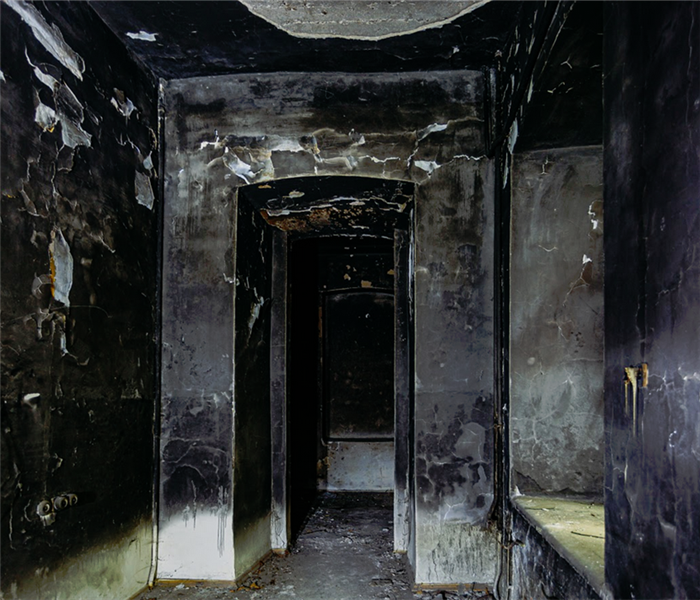 Entering your home after fire damage can be a dangerous journey. Contact SERVPRO for professional remediation and mitigation services.
Entering your home after fire damage can be a dangerous journey. Contact SERVPRO for professional remediation and mitigation services.
A Burnt Building Can Produce Unpleasant Odors and Soot. SERVPRO Fire Restoration Services Can Recover your Bridgewater Property.
Is it dangerous to breathe in smokes or soot?
A fire emergency in your Bridgewater home can lead to extensive damages. Fires produce lethal gases like monoxide, but these volatile particles typically disperse quickly after the flames are extinguished. Modern materials used for home contents or structure are increasingly involved in their chemical composition. This complexity can lead to smoke residues that contain hundreds of chemicals. While few of these are lethal, ingesting, or inhaling soot and smokes in a fire-damaged structure can be unhealthy. SERVPRO recommends wearing an N95 respirator when working in a structure that has fallen victim to a recent fire.
What airborne dangers exist in a burnt property?
- Volatile Organic Compounds (VOC) can be harmful to human health and inhaled from inside a structure with fire losses.
- Particulate pollution can be microscopic dust or soot particles that can be inhaled or ingested.
- Some deodorization solvents or equipment (oZone generators) can be harmful with inappropriate use.
How do fire technicians restore indoor air quality?
Getting rid of tiny airborne soot or smoke particles is an essential aspect of fire restoration in your Bridgeport home. Many odor control techniques can get rid of smells without addressing particulate pollution. SERVPRO uses air-filtration devices in a burnt property, which can filter out particles as small as 0.3 microns. Deploying an air-filtration device also helps to control odor issues by drawing odor particles out of the environment. Returning your home to a preloss condition includes addressing indoor air-quality problems that may be caused by fire.
What makes a good HEPA filter?
- To carry the label of HEPA, the filtration must be able to remove 99.97% of particles from indoor air
- Clean air delivery rate, which measures the amount of air passing through the filter. High levels ensure efficient air cleansing.
- Checking the minimum efficiency reporting value, or MERV rate, which is an indicator of filtration efficiency.
Restoring indoor air-quality can help return your home to a preloss condition. Contact SERVPRO of The Bridgewaters at (508) 697-5439.
Click here for more information about Bridgewater.
Is smoke damage permanent in my Easton home?
8/25/2020 (Permalink)
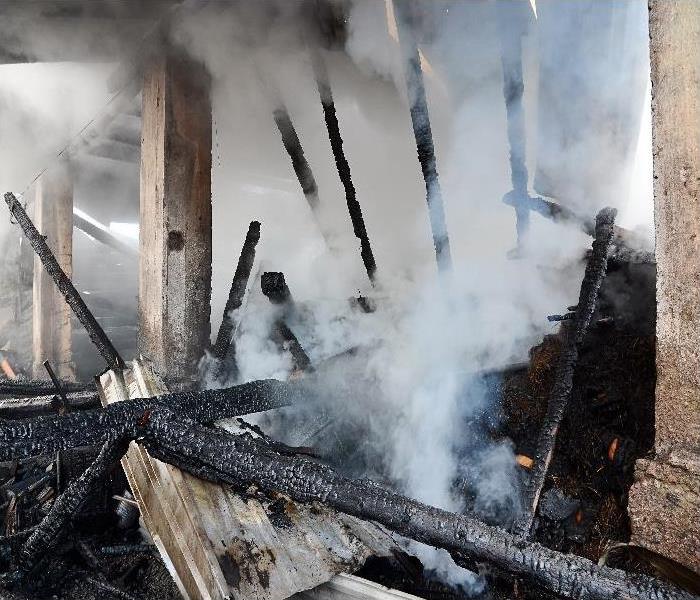 If a housefire affects your home with stubborn soots and odors, contact SERVPRO of The Bridgewaters at (508) 697-5439.
If a housefire affects your home with stubborn soots and odors, contact SERVPRO of The Bridgewaters at (508) 697-5439.
SERVPRO Fire & Smoke Damage Restoration Technicians Can Remove Stubborn Smoke Residues and Odors from the Contents and Structure of your Easton Home.
What is smoke damage?
When a fire breaks out in your Easton home, rapidly combusting materials release toxins into the surrounding area in the form of smoke. This smoke can have a composition, including carbon, synthetic chemicals, or ashes. In high-pressure fires, these smoke particles can force themselves into surfaces like walls, ceilings, and furnishings. Once smoke cools, it may drop to the floor below, causing a layer of ash, which can cause further harm to your property when contacting with carpet fibers. Surfaces throughout your home may show blackening, or there may be noticeable smokey odors that last long after the initial fire has been brought under control. Our technicians are trained specially to remove soiling and bring any residual odors under control without further harming the structure and contents of your home.
How is smoke removed without damaging surfaces?
Smokes can bond with surfaces making fire damage restoration in your Easton home challenging. Technicians need to decide to remove smoke from surfaces using either agitation of the surface or with chemical components. Agitation can include mechanical cleaning methods like air-whips. Air whips rapidly rotate rubber whips against the surface to dislodge soots and make them removable. Chemical solvents suspend bonded soot into the solvent solution. The suspended soots can then be rinsed away along with the solvent. SERVPRO can perform repainting of some surfaces if solvents damage paintwork during the removal process. We aim to leave your home in a preloss condition following a property fire.
What other methods do you perform during fire cleanup?
- Debris removal
- Odor control
- Contents cleaning
If a housefire affects your home with stubborn soots and odors, contact SERVPRO of The Bridgewaters at (508) 697-5439.
What Can I Do In The Event Of A Kitchen Fire In Bridgewater? Can It Be Prevented?
8/4/2020 (Permalink)
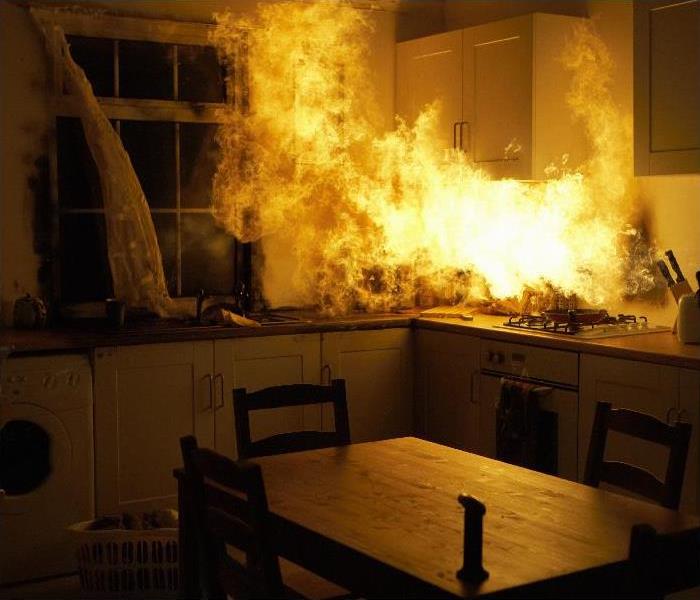 Cooking fires can destroy a kitchen.
Cooking fires can destroy a kitchen.
No Fire Can Be Totally Prevented, But There Are Steps You Can Take And SERVPRO Can Handle the Fire Damage if it Happens In Bridgewater!
Over one-fourth of all fires take place in homes. The majority of these fires happen in the kitchen. Prevention is better than intervention, but if help is needed in a Bridgewater home, call the professionals.
What are the most common causes of house fires?
A house fire is never a pleasant thing. The National Fire Protection Association (NFPA) notes, cooking is the main cause of fires in the home and the need for fire damage restoration in Bridgewater homes. But cooking isn’t the only thing that can lead to a residential fire. The top five reasons are:
• Cooking
• Heating
• Electrical & Lighting
• Arson
• Smoking
Kitchen fires are one of the main reasons SERVPRO gets called out to deal with fire damage. The Federal Emergency Management Agency (FEMA) states that firefighters responded to 188,800 cooking fires in two years.
What Causes Cooking Fires
Kitchen fires resulting from a cooking fire involve a stove or cooktop 62% of the time. Unattended cooking is the main reason for this type of fire, but things like flammable materials too close to the stove are another reason. Electric stoves cause more problems than gas stoves. Improper disposal of hot items is another cause. Thanksgiving and Christmas appear to be the peak time for these incidents to occur.
How Can I Prevent a Kitchen Fire?
One of the foremost essential things you can do is to stay alert. Never walk away from the stove when you have something cooking, turn off the stove if you need to step out. Keep all flammable material away from the range. Many people use their flat surface stoves as additional counter space. That is a big mistake that could cost you dearly. Always assume the stove is hot even when off. Keep your heat at the proper level. If your skillet starts to smoke or your pot boil over, turn off the heat. Keep a cookie sheet handy to place over the top of a pan that does catch fire.
What Happens if There is a Cooking Fire?
If the worse does happen and you undergo a kitchen fire, our Institute of Inspection Cleaning and Restoration Certification (IICRC) accredited technicians are ready to go at a moment’s notice. Once they arrive, they will immediately assess the situation. Kitchen fires are often contained and damage minimal comparatively, but there are still things that need to be determined before fire damage restoration can begin. They will determine the type of smoke residue, pretest materials for the proper cleaning techniques, and decide if there is any structural damage. The goal is to restore items rather than replace them when possible.
Cleanup and Restoration
Once a course of action is decided, the Green Team of professionals get to work. With years of experience and specialized training, they can provide the necessary services for your situation. In the case of fire damage restoration, these could include:
• Debris removal – the stove may be charred and unsalvageable
• Dry cleaning – using techniques such as wiping down surfaces
• Wet cleaning – using professional chemical cleaners specific to the soot and the item getting cleaned
• Restoring wood surfaces
• Cleaning or replacing flooring
• Checking other kitchen appliances for problems arising from the fire
• Deodorizing – air scrubbers, thermal fogging, ozone generators or aroma pellets
• Cleaning HVAC duct systems
Do I Need Expert Restoration?
A minor house fire may look harmless enough and leave you thinking you can take care of it yourself. That isn’t generally the case. Smoke residue seeps into the tiniest cracks and crevices. Depending on the type of soot, it leaves behind improper cleaning can make it worse. SERVPRO uses industrial-grade equipment and cleaning supplies that the average homeowner does not have access too. Our experts know what and where to look for when it comes to fire damage.
Available Around the Clock
SERVPRO is ready to handle any fire damage that may occur, including kitchen fires. We hope that you can prevent a cooking fire, but if something unavoidable happens, we are available 24/7. Disaster doesn’t take a holiday, and neither do we. You can trust our fire restoration technicians to leave your home, “Like it never even happened.” Your life doesn’t stop because a fire happens, and we understand that. Our rapid response team will do everything they can to get you back to normal.
Cooking fires can destroy a kitchen. Contact SERVPRO of The Bridgewaters at (508) 697-5439 for expert fire damage restoration service that is Faster to Any Size Disaster.
I Need Help with Fire Cleanup in Bridgewater, How Soon Can SERVPRO Get Here?
6/14/2020 (Permalink)
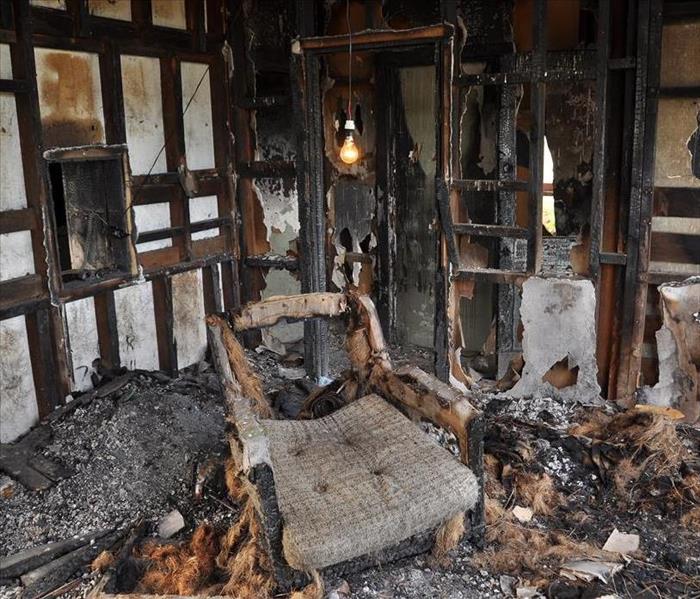 Don’t face damage after a fire alone! Contact SERVPRO for fire damage remediation services.
Don’t face damage after a fire alone! Contact SERVPRO for fire damage remediation services.
When You Need Fire Damage Restoration, SERVPRO Deploys a Crew to Your Bridgewater Home as Quickly as Possible
Fires occur when you least expect them, and the damage can be immense. Even if you feel as though the devastation is not all that bad, it could be more widespread than you think. Calling in the help of restoration technicians with a trained eye will help you to determine precisely what you are dealing with. SERVPRO is available in a moment’s notice when you are faced with fire loss in your Bridgewater home. We can get the job done quickly because we are Faster To Any Size Disaster!
Are You Available at Any Time?
You can call the team at SERVPRO 24 hours a day, seven days a week for help with fire damage in Bridgewater. We are always available to assist, and our crews understand that an emergency can take place at any time. Once we arrive on your property and it has been deemed safe for entry, we focus on assessing the damage and the impact that the fire had on your belongings, building materials, and the structure as a whole.
- We have IICRC-certified technicians specially trained to formulate a plan that allows for restoration of your home to preloss condition.
- Our team disposes of all unsalvageable materials and utilizes best practices for restoring salvageable belongings.
- We apply specialized solutions crafted for non-porous and porous surfaces that allow us to remove smoke and soot residue safely.
For any Bridgewater fire loss event, foul odors from the smoke must get addressed aggressively. We have a wide range of techniques in our arsenal for neutralizing such odors. Some of the options available include:
- Aroma pellets
- Ozone generators
- Thermal fogging
- Air scrubbers
- Charcoal activated filters, and more
Why Do I Need Expert Restoration?
Any fire damage event calls for professional support so that you may achieve safe, long-lasting results. Homeowners do now have the skill or industrial-grade equipment necessary to handle the cleanup and restoration process. Even if you can clean up debris and assess the damage, expert technicians can quickly and effectively bring your interior back to life.
What Do I Do About Everything that Got Wet?
During the course of extinguishing the flames, first responders use water and sometimes chemicals. Any wet surfaces have to be addressed with professional water extraction so that no moisture gets left behind. Should your home have any kind of water damage, items and building materials have to be dried as soon as possible. For example:
- We have dehumidifiers that help to eliminate moisture from carpets, draperies, and other fabric surfaces. Without proper drying, the damage could be beyond repair, and mildew might set in.
- Items made from copper or brass must be cleaned with special cleaning agents as soon as possible. The acidic nature of the smoke from the fire can start to react with these materials in as little as 24 hours after the fire loss event.
- Building materials also call for special attention while drying. Soggy sheetrock can crumble, and subflooring can begin to swell. If you have hardwood floors, they are vulnerable to moisture, which can cause them to bulge, buckle, and warp.
How Do You Handle Soot Residue?
The type of residue left behind depends on the materials burned during your house fire and how they burned, such as:
- Fast-burning fires that burn extremely hot put out a powdery residue, which makes it fairly easy to clean.
- A smoldering, slower-burning fire puts out wet smoke that leaves an odor-causing, sticky residue that is challenging to clean.
- If the fire in your home included petroleum products, there would be a higher level of soot that may be easy to detect on hard surfaces, but it can settle into carpeting and other fabrics.
Smoke often filters out into your HVAC system throughout the course of the house fire. When this happens, and it does not get addressed appropriately, each time that your air conditioner or heating system gets turned on, it can trigger the foul smoke odors. We work to carefully clean and repair your ducts so that we can remove all traces of the fire. In some cases, this can include the application of special sealants.
To handle the soot from your fire loss, we have specialized techniques that allow us to tackle a range of surface areas. For restoring your interior, we have both dry and wet cleaning methods as well as chemicals and various equipment that help us to make everything “Like it never even happened.
We have all of the best tools and equipment for your fire damage restoration needs at SERVPRO of The Bridgewaters. If you need help with emergency service, call us at any time at (508) 697-5439, and we will send out a crew as soon as possible.
What Steps Should I Take Immediately After Fire Damage In My Bridgewater Home?
5/24/2020 (Permalink)
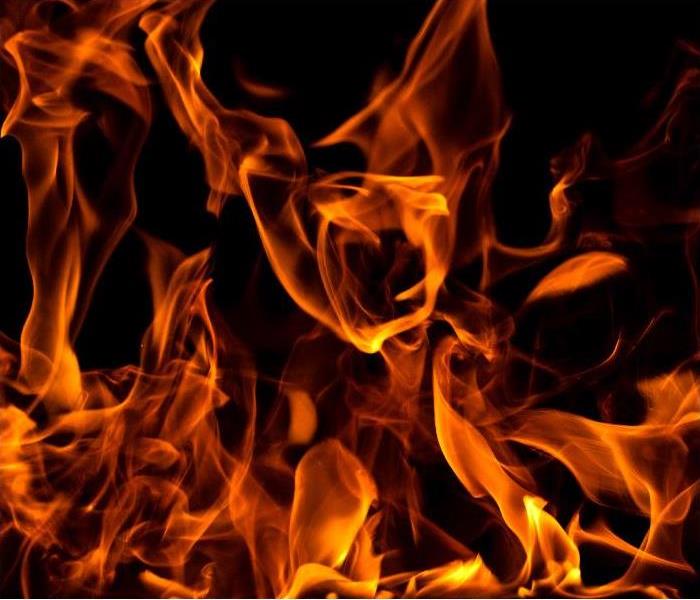 Taking the correct steps immediately after a fire limits the chances of unnecessary damage.
Taking the correct steps immediately after a fire limits the chances of unnecessary damage.
SERVPRO Technicians Can Guide You and Help in Completing the Necessary Restoration Steps in Bridgewater
A fast response is crucial after fire damage incidents in Bridgewater to forestall some problems that develop after putting out the fire. Quick action also helps guarantee faster reoccupation of the house. Although it might not appear so, planning the restoration process can be challenging because it involves several steps, and it might not be clear which ones have a higher priority.
What steps are typical in the early stages of most restoration exercises?
When choosing the steps to take immediately after fire damage incidents in Bridgewater, the main consideration is how the incident is expected to unfold. If some materials or contents that survived the fire might deteriorate further, prioritizing steps that help stop such deterioration is essential. In most cases, the initial stages involve:
• Thorough scoping of the loss site
• Securing the property
• Calling the insurance company
Why is scoping essential before starting restoration?
Although it is easy to tell whether a fire extensively damages property or not, there are aspects of damage that you cannot identify without doing thorough scoping. Successful scoping requires the right skills and equipment. When evaluating a fire loss site, our SERVPRO technicians focus on issues such as:
• Charring depth especially on structural supports
• Pretesting materials for cleaning purposes
• Establishing the type of smoke residues left
Salvaging materials after fire damage helps reduce repair costs. Since the decision of whether to save an item depends on the level of damage, thoroughly evaluating affected materials is essential. For building materials such as frames and other structural supports, scoping helps establish whether there are significant residue deposits or charring on their surfaces. A tool such as a tar depth gauge helps establish whether charring affects more than 10% of the cross-section of frames, thus compromising their structural integrity.
Why is testing necessary before cleaning?
Cleaning is one of the activities necessary for the restoration of fire-damaged properties. Although cleaning is beneficial, it can also cause problems such as ruining the material being cleaned or spreading residues beyond the areas initially affected. Testing helps prevent such problems and also improves the ease of cleaning. Our SERVPRO crews test fabric materials such as carpets as well as finishes, such as paint on different surfaces. The tests we perform on carpets help establish several aspects that influence the cleaning processes, including:
• Stain resistance
• Level of soiling
• The physical condition of the carpet
Why does the type of smoke residue matter?
As the fire burns, you might notice minor differences in the type of smoke produced. For example, you might notice thick clouds of smoke, or the color can range from grey, brown, or black. Unlike the simple differences in appearance, the residue deposits from smoke can differ greatly, affecting the restoration process. Establishing the properties of such residues helps in choosing the correct cleaning procedures. Our SERVPRO technicians use several approaches to test residues, including simple ones such as running a cleaning sponge along surfaces starting from the seat of the fire and moving outwards to establish how far the residues spread. We also check other properties, such as whether the residues are predominantly dry or wet. From the information gained from testing, our technicians decide what cleaning procedures to use, including:
• Mechanical options such as wiping
• Wet cleaning with professional cleaning products
• Specialized cleaning with sophisticated methods such as soda blasting
How is a fire-damaged structure secured?
Securing a property immediately after fire damage helps prevent further deterioration. There are many ways to secure a property, so the steps taken depend on factors such as the level of damages and whether the property remains occupied during restoration. In case of severe fire damage, our SERVPRO technicians board up all openings in the exterior of the structure, protecting the interior from further deterioration. In case of fires localized in sections of the property such as kitchens or living rooms, we can board up those specific areas allowing access to the rest of the house.
Apart from setting up barriers, another way to secure the property is to identify vulnerable materials or contents and secure them. For example, soot has acidic properties, which corrode metallic materials and finishes. It can also stain stone materials such as granite permanently. Our Crews pre-clean such materials then apply thin oil film on their surfaces to protect them from further damages.
Taking the correct steps immediately after a fire limits the chances of unnecessary damage. Call SERVPRO of The Bridgewaters at (508) 697-5439 to help restore your property. We’re Faster to Any Size Disaster.
How Do I Safely Remove the Fire Damaged Property from My Your Bridgewater Home without causing More Damage?
4/7/2020 (Permalink)
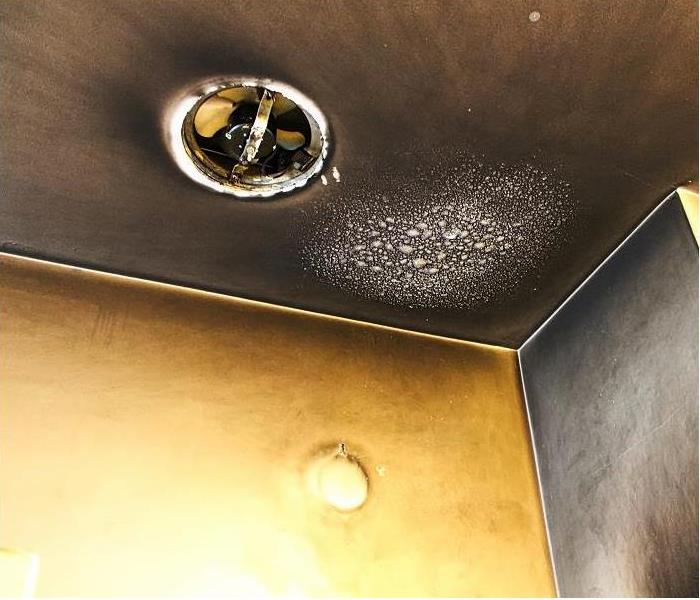 Even small fires can produce smoke and soot throughout the house. We have the equipment and expertise to clean your home and possessions.
Even small fires can produce smoke and soot throughout the house. We have the equipment and expertise to clean your home and possessions.
Use SERVPRO Fire Restoration Technicians to Professionally Clear Your Bridgewater Home
Most residential fires, like yours, are usually restricted to one part of a home. The origin point is usually a cooking fire in the kitchen or from improperly stored chemicals and cleaning rags in the garage. These locations are where the physical damage is at its worst, such as scorching and other damage from the heat and flames. If the fire burns in your Bridgewater home burns long enough, it can send smoke, soot, and larger particles throughout the home, which can cause further physical and other damage.
How can SERVPRO protect my home while removing Fire Debris
For fire debris removal in Bridgewater homes, SERVPRO Fire & Smoke Restoration Technicians (FSRTs) lay down a layer of thick plastic so that we do not grind burnt particles into what might be an, otherwise, undamaged carpet. Once that is in place, the FSRTs take the next steps:
- Inspect the structural and personal property for items that cannot be cleaned or repaired
- Carefully bag everything small enough before removing it from your home
- Break down more substantial items into smaller pieces for easier removal. Where possible, they disassemble an item (a bookcase for example) to avoid accidentally injuring themselves or causing further damage through demolition
- Place all debris into a skip as quickly as possible for removal to a dumpsite.
What about all of this Smoke and Soot Residue in my home?
We can remove that too. After removing scorched items Bridgewater properties like wall framing, couches, and ceiling fans, our FSRTs move in to perform the following tasks:
- Where residues are dry and powdery, specialists wipe down everything with dry sponges and cloths. If this does not remove everything, they spray a small amount of water or mild cleaning agent to break up the residue. They repeat this step until the property is clear of smoke and soot residue.
- For wet or sticky residues, our specialists use a stronger cleaning agent to break these down. As with the dry residues,
- If the residues have strongly bonded to a surface, our specialists have another option. If the surface is easily scratched or gouged, FSRTs use a soft-bristled brush to work out the residues. If the surface is stone or brick, they use wire brushes or powered agitation device to dig the residue out of the surface and break it apart for removal.
Fire Damage is Not Only Physical
Odor removal is often the last step for clean-up companies, but at SERVPRO, it is a part of every step in our restoration process. Odor Control Technicians (OCTs) train specifically to eliminate the smell of smoke and other residues that can appear after extinguishing a fire.
- They use cleaning agents specially designed to neutralize odor particles left on otherwise clean surfaces.
- For odors that penetrated the surface of items such as wall framing and other structural property, they sand down the top layers and remove the dust until the odor dissipates.
- If the odor deeply penetrated structural or personal property, they use an ozone generator to create a gas that penetrates to the same depth as the odor particles. The ozone binds with and eradicates the odor particles.
How Expensive is Restoration?
Restoration can be costly, depending on the item. It is, however, the only way to keep a piece of furniture or something else passed done over the generations. That is why our office has Upholstery & Fabric Cleaning Technicians (UFCTs) and Water Damage Restoration Technicians (WRTs) for particular tasks:
- UFCTs use specialty tools like injectors that attack smoke and soot residues by deeply penetrating fabric on couches and chairs. These devices are also used by OCTs to eliminate odors in the same items.
- WRTs train to remove water damage on the property caused by efforts to extinguish the fire. For example, on wood furniture, they use air movers to evenly dry paint and veneer that was accidentally soaked to lift water spots and other damage.
Does SERVPRO Keep Track of Everything Removed and Replaced or Restored?
Our team leaders maintain a detailed list of their actions on each home we service. That includes a complete inventory of each piece of structural and personal property removed. For restorable items, they keep a list of them and the actions taken to perform the task. This inventory is beneficial when it comes time to deal with your insurance carrier.
For fast, professional, and thorough removal of fire damage in your home, use our experts at SERVPRO of the Bridgewaters. No matter the size of the fire, one of our teams is ready 24/7 to clear and clean your residence. Contact us at (508) 697-5439 today to schedule a service call.
We Act Fast In Easton After A Fire
12/13/2019 (Permalink)
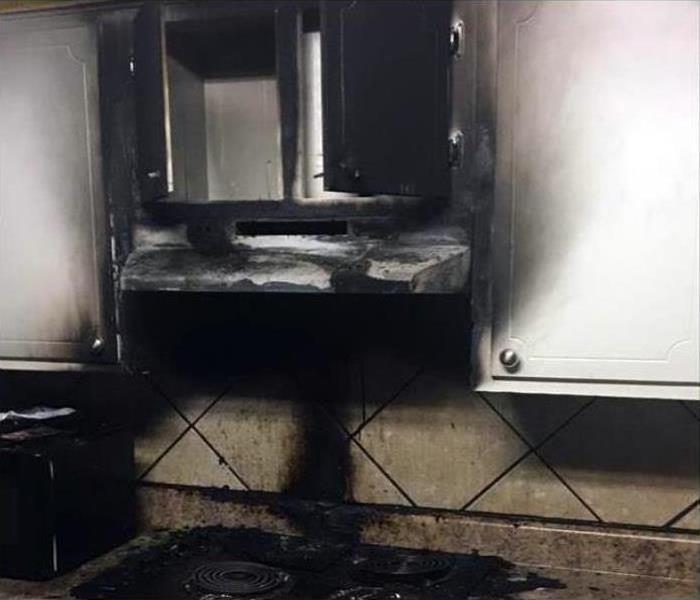 We have the training, fire damage experience, and state-of-the-art equipment to restore your home to pre-damage condition.
We have the training, fire damage experience, and state-of-the-art equipment to restore your home to pre-damage condition.
Fire Damage Cleanup in Your Easton Residence Calls for Expert Restoration Techniques
If you have even seen a building burning down, you know the destruction that a fire leaves in its wake. Unfortunately, even after putting out the flames, smoke residues and associated smells can linger in a house for many days. This means that while trying to restore your residence, you could be dealing with the stench. Smoke can easily seep into the wood, drywall, and textiles.
When the smoke settles on a surface as a residue, it is called soot, and it can coat a wide range of materials, causing corrosion and discoloration. SERVPRO can help you stop further fire damage in your Easton residence. Our restorers can guide you through the restoration process. We can clean up your property and restorable contents to remove ash, smoke residues, water from firefighting efforts, and malodors.
We can use our experience to choose the restoration methods that can provide the desired results. Various factors determine the severity of fire damage. These factors include:
The size of the fire: If the flames were significant, there might be a substantial amount of smoke residues to clean up.
Room size: In small rooms, the smoke odor is likely to be intense and highly concentrated.
Time of exposure: If your property was exposed to smoke for an extended time, the residues could be more significant.
Odor type: The severity and consistency of odors often depend on the structures and contents that burned during the fire.
Our Smoke and Fire Damage Restoration Technicians (FSRTs) can clean up the smoke residues using tools like dry cleaning sponges. We can use these sponges to eradicate light to medium soils that are not greasy. Apart from cleaning up soot, our restoration experts can take steps to mitigate the contamination that gaseous chemicals cause. The typical chemical components that cause contamination are the semi-volatile organic compounds (SVOCs) and the volatile organic compounds (VOCs) that cause smoke smells.
Cleaning up smoke particles may not remove VOCs and SVOCs. These compounds are also not the same in every fire, and they usually change based on the fuel source, which could be structural framing, plastics, paint, rubber, or fabrics. We can use advanced equipment to identify these compounds.
By identifying volatile and semi-volatile organic compounds, we can understand the substances that burned during the fire and complete the restoration process correctly. This knowledge also enables us to deal with the challenges of eliminating specific smoke residues. For instance, protein fires produce minimal visible smoke residues. Underestimating the destruction is easy if your home does not have the black residues linked with typical fires. The layer of film that protein fires produce can create a strong smell. The protein residues can also penetrate items like clothes, drapes, drawers, and cabinets. Our SERVPRO crew can clean the affected surfaces and materials thoroughly to remove the layer of film and odor.
After the unfortunate event of fire damage in your home, call SERVPRO of The Bridgewaters for professional fire restoration services. Our helpline is (508) 697-5439.
See more about Easton.
Call Us To Begin A Fire Damage Restoration Partnership In Bridewater
10/21/2019 (Permalink)
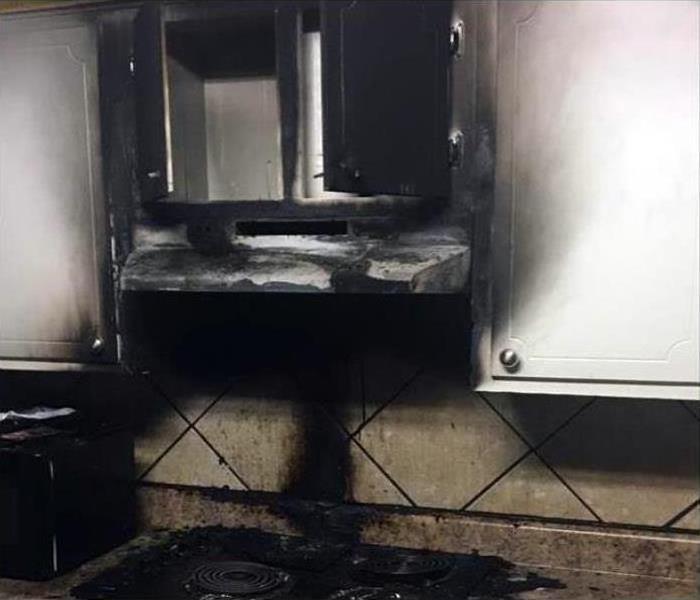 We have the training, fire damage experience, and state-of-the-art equipment to restore your home to pre-damage condition.
We have the training, fire damage experience, and state-of-the-art equipment to restore your home to pre-damage condition.
What to Expect from Professional Fire Damage Mitigation and Remediation in Bridgewater
Residential fires in Bridgewater are frightening events, priorities moving loved ones and pets to safety away from the fire. The relief felt when your family is out of harm’s way gradually transforms into worry and anxiety as you begin to comprehend the severity of the harm done by heat, flames, and smoke. You need not handle the complexities of fire recovery alone. Our team is well-trained, equipped, and ready to help.
Consult with Our Experts Before Cleaning
When you see the fire damage in your Bridgewater home, it is understandable that you want to do something to make it better. Unless you have specialized training and equipment, however, any effort you make to clean up can make the damage worse. Fire residues smear, are often tightly adhered, and contain a range of toxic substances that make the wearing of personal protective equipment (PPE) essential when removing. Our Fire and Smoke Restoration Technicians (FSRT) learn and follow protocols during coursework offered by the Institute of Inspection, Cleaning and Restoration Certification (IICRC). We are uniquely positioned to manage fire damage efficiently and safely, meeting or exceeding industry standards.
Common First Phases of Fire Damage Recovery
Slip and fall accidents and the possibility of electric shock or other harm makes water removal on of the first phases of a SERVPRO fire damage plan. Although the water and chemical extinguishers were vital to stopping the fire, we must now extract and contain the fluids and foams, disposing of them as hazardous waste. Next, we locate and evaluate the soot damage throughout your home. Even rooms distant from the ignition site can show damage as smoke and its solids, or soot, deposit on cooler surfaces wherever the air currents moved. Our technicians match soot types to appropriate products and cleaning methods as they vary depending on the temperature, oxygen level, and kind of fuel burned.
Deodorization Issues
Fire residues are highly malodorous. The smell primarily resides in the tiny particles of incompletely combusted materials that accelerated the fire. Merely masking the smell with air fresheners or hoping proper ventilation will sweep the smell away is unrealistic. SERVPRO uses a variety of advanced technologies, including ozone machines, thermal foggers, and hydroxyl generators, to neutralize the stench by altering the odor-bearing particles at the molecular level.
Rely on SERVPRO of The Bridgewaters to assess fire damage at your home, and to create a practical, research-based, and productive work plan to make it “Like it never even happened.” Call us at (508) 697-5439 to begin our partnership.
See more about Bridgewater.
Our Experts Have Specialized Equipment To Restore Your Bridgewater Home
9/5/2019 (Permalink)
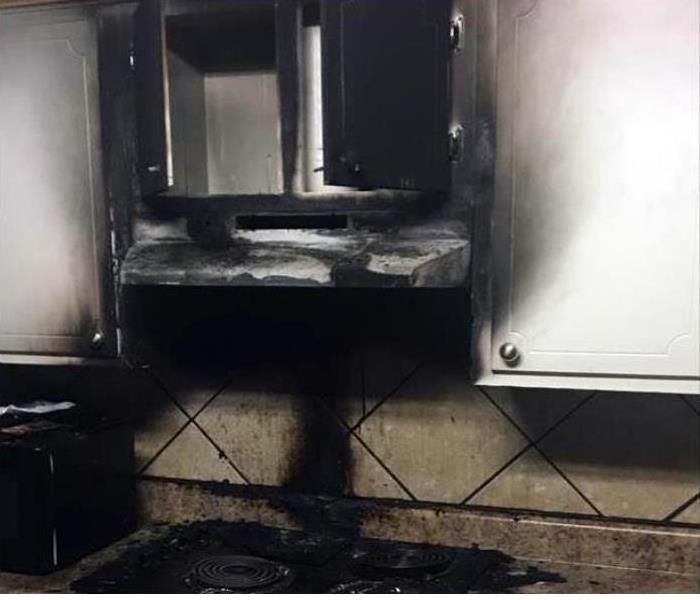 We have the training, fire damage experience, and state-of-the-art equipment to restore your home to pre-damage condition.
We have the training, fire damage experience, and state-of-the-art equipment to restore your home to pre-damage condition.
Learn What You Should Salvage in your Fire-Damaged Bridgewater Property
Dealing with life after a fire damage experience is not always easy. However, it should not mean what you took so long to build cannot be restored to its earlier state. No matter how scary the experience is, you can still find items that you can salvage and save on the high cost of replacing everything. When not sure about what to do next, you can seek professional help in Bridgewater.
Most people in Bridgewater assume that fire damage occurs when the fire burns items it comes across. They think that the smoke and soot which the incident leaves behind is less dangerous - which is a big mistake. Smoke particles can get attached to the carpets, walls, furniture, and ceilings. If the cleaning is not up to standards, they can stay in position for a very long time, leading to possible odors and health effects. Our SERVPRO technicians use specialized equipment to remove the soot particles, something which can be a big challenge if you decide to do it by yourself.
If you are a DIY enthusiast and you insist on removing the smoke particles yourself, our SERVPRO experts advise you to use a vacuum cleaner. When using the tool, make sure the nozzle is held slightly above the area with the soot. Always avoid using a vacuum cleaner that has brush attachments since the brushes may force the soot particles in the item and cause more damage. When dealing with dry soot, it is more appropriate to use HEPA vacuums.
Odor removal is a crucial process during fire damage restoration. Masking the odors with a fragrance may provide a short-term solution to the problem, though, we highly discourage that. Our SERVPRO Odor Control Technicians (OCT) perform appropriate odor managements processes to remove the annoying smells. We can start by identifying and eliminating the odor-causing particles from the building. To address the odor problem in inaccessible areas, we can perform thermal fogging. It is a process in which heated mist is injected into hard to access locations to neutralize the odors.
SERVPRO of The Bridgewaters is locally operated and owned and can make your property “Like it never even happened” after the disaster. Call us at (508) 697-5439 and allow us to return your property to its preloss condition.
See more about Bridgewater.
We Can Save Fire Damaged Items in Your East Bridgewater Home
8/5/2019 (Permalink)
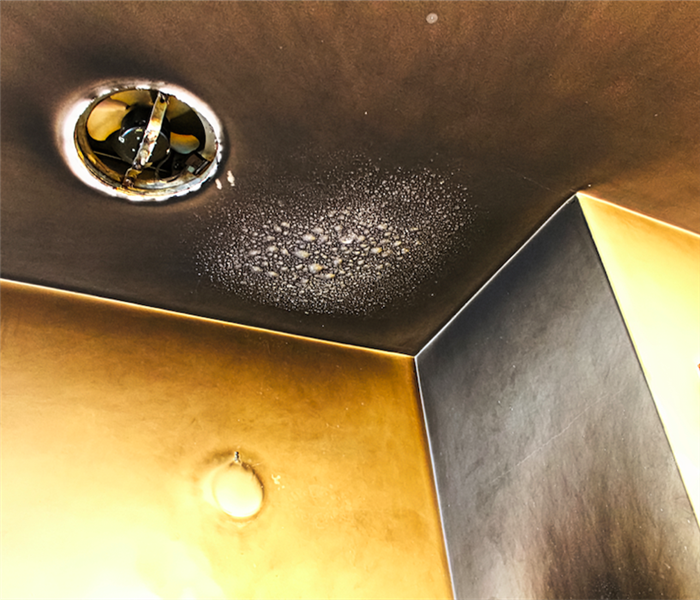 Fire damage to your East Bridgewater home can be stressful. Call the professionals at SERVPRO today for remediation assistance.
Fire damage to your East Bridgewater home can be stressful. Call the professionals at SERVPRO today for remediation assistance.
Organization Helps in the Restoration of Fire Damage in Affected East Bridgewater Homes
Since fire causes widespread damages within a short while, the restoration process involves many steps. There is a bit of demolition, cleanup, drying, and deodorization, among other activities. Proper organization is necessary to ensure each of these steps goes according to plan. We have highly trained FSRT, Fire and Smoke Restoration Technicians, who can run a properly coordinated restoration exercise in your East Bridgewater home.
The Crucial Role Tools Play
Having the right equipment when restoring fire damage in the affected East Bridgewater home helps the process run smoothly. A significant step such as removing damaged drywall, carpets, or other scorched materials can stall because of lack of a simple tool such as a pry bar. Our SERVPRO crews bring all sorts of equipment in our green trucks, including simple ones such as rubber hammers and crowbars. We also have equipment for specialized tasks, including:
ULV Foggers
Duct Cleaning Systems
Pressure Sprayers
Multi-surface scrubbers
Respirators
Chemical Resistant Gloves
Working Chronologically
Although completing all the processes is the only way to restore the fire-damaged property fully, it is crucial to assign a higher priority to specific actions over others. Steps that help stop further deterioration at the property should be addressed first. Our SERVPRO technicians first secure the property by boarding it up and installing roof tarps. We also do content pack-outs if necessary to protect valuables from further damage during restoration. Such steps also help create more convenience to perform other steps.
Even performing individual tasks might require the right approach to work faster and get good results. For example, a haphazard approach when cleaning soot and other smoke residues from ceilings and walls can prolong the process unnecessarily. Our SERVPRO technicians start with the ceiling then proceed to the walls when using wet cleaning procedures. For the walls, a top-down approach helps prevent re-soiling.
For an adequately organized restoration process when your Bridgewater, West Bridgewater or Easton property is damaged by fire, call SERVPRO of The Bridgewaters to help. You can reach us any time at (508) 697-5439. We have enough resources to deal with any level of damage “Like it never even happened.”
Click here to see more about East Bridgewater.
Our Professionals Can Save Your East Bridgewater Home
7/2/2019 (Permalink)
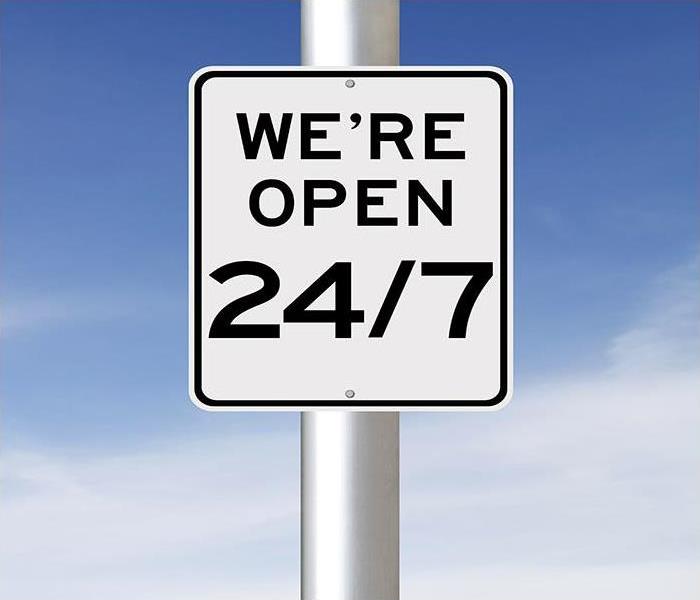 Our experts have the resources to deal with any incident “Like it never even happened.”
Our experts have the resources to deal with any incident “Like it never even happened.”
Dealing With Fire Damage In Your East Bridgewater Home When There Is No Fire
The risk of damage by fire is ever present, considering it takes just a few seconds for a small spark to become a huge blaze if the conditions are right. Sometimes, severe fire damage can occur even when there is no actual fire in the property, or it is confined to a small section. Some examples of such incidents include puff-backs and grease fires in the kitchen. Our professional fire damage restoration services are helpful in such cases.
When flames do not cause fire damage in your East Bridgewater home, most of the restoration work involves clean up because of soot and other residues deposited on surfaces and contents such as beddings, drapes, upholstery and other furniture items. Puff backs or small fires burning with thick smoke are two common situations most likely to cause such damages.
The effects left by such incidents include darkened surfaces such as walls and ceilings, soot deposits on various materials and a heavy odor that does not dissipate quickly. A thorough evaluation of the affected areas is essential to establish what is affected. At SERVPRO, we have IICRC certified FSRT, Fire and Smoke Restoration Technicians, who can evaluate your property and determine the best steps to take to restore the property to its preloss state.
Puff backs leave a combination of fuel oil smoke deposits and dust particles on the affected surfaces. Fresh soot is easy to clean, but in some cases, it might have hard crusty particles that can scratch the surfaces. In some cases, the soot may bond with wall paints if the furnace emits smoke over extended periods before ignition. Small kitchen fires, on the other hand, create wet smoke residues or protein residues which are hard to clean. Our SERVPRO technicians can deal with all these challenges. We rely on advanced equipment, including surface scrubbers and pressure washers to remove stubborn deposits. We also use professional cleaning products and deodorizing agents to remove traces of residues and bad odor.
Fire damage, even from a small incident, can be hard to address. Call SERVPRO of The Bridgewaters at (508) 697-5439 to help. Our experts have the resources to deal with any incident “Like it never even happened.”
For more about East Bridgewater click here.
We Can Restore Your Fire Damaged Home In East Bridgewater
6/13/2019 (Permalink)
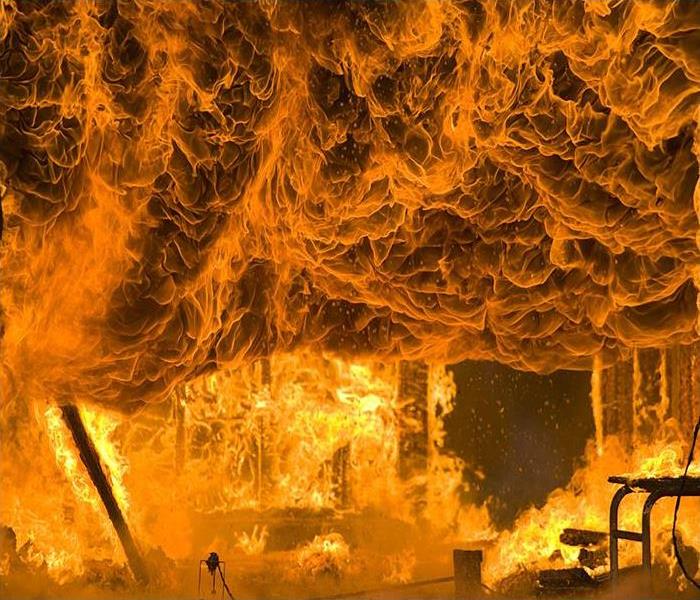 SERVPRO of The Bridgewaters handles all types of fire damage restoration.
SERVPRO of The Bridgewaters handles all types of fire damage restoration.
Bedroom Blaze Leaves Fire Damage Cleanup Challenge In East Bridgewater Home
Candles set the mood in a room, have a pleasant fragrance, and have the potential to cause significant fire damage. The speed at which the cleanup and restoration of fire loss begin can increase the number of items saved.
SERVPRO technicians worked on fire damage in the bedroom of an East Bridgewater home caused by a candle to get it ready for rebuilding. After containing the affected area, our technicians moved out the charred window treatments, mattress and bed frame as the longer they remain on the property, the more soot and odor they have the potential to spread.
The carpet was deemed a fire loss by the adjuster and required removal but was too heavy to move as it retained water. We extracted the water from extinguishing the fire from the carpet and cut it into strips for easy removal. We needed to perform controlled demotion to remove the charred sheetrock. We photographed, cataloged, and removed items in the room that had the potential for restoration to another area for cleaning and odor control.
As the bedroom was dried, we deployed air scrubbers to remove airborne soot particles. Once dry, we wiped down and disinfected the surfaces. These actions go a long way towards lowering odors left by the fire, but to rebuild, full removal of all offensive odors must occur.
We used a combination of an ozone machine which neutralizes odors at the molecular level and thermal fogging, which delivers a heated solvent that moves through the room the same way as the smoke did. Once we removed the odors, the room was ready for rebuilding. Our technicians gave the homeowner and adjuster a list of the tasks completed for mitigation as well as the repairs needed to return the bedroom to its preloss condition.
SERVPRO of The Bridgewaters handles all types of fire damage restoration. Our emergency response crew is available 24/7, call us at (508) 697-5439, and we can be on site soon after your initial call because We’re Faster to Any Size Disaster.
Click here for more about East Bridgewater
Is your dryer a ticking time bomb.
6/27/2018 (Permalink)
How safe is your dryer?
Here are some fire prevention tips from The National Fire Prevention Association
• Have your dryer installed and serviced by a professional.
• Do not use the dryer without a lint filter.
• Make sure you clean the lint filter before or after each load of laundry. Remove lint that has collected around the drum.
• Rigid or flexible metal venting material should be used to sustain proper air flow and drying time.
• Make sure the air exhaust vent pipe is not restricted and the outdoor vent flap will open when the dryer is operating. Once a year, or more often if you notice that it is taking longer than normal for your clothes to dry, clean lint out of the vent pipe or have a dryer lint removal service do it for you.
• Keep dryers in good working order. Gas dryers should be inspected by a qualified professional to make sure that the gas line and connection are intact and free of leaks.
• Make sure the right plug and outlet are used and that the machine is connected properly. • Follow the manufacturer’s operating instructions and don’t overload your dryer.
• Turn the dryer off if you leave home or when you
The leading cause of home dryer fires is failure to clean them!
How safe is your child's sleepover?
6/26/2018 (Permalink)
Check out these tips for a safe sleepover from the National Fire Protection Association.
NFPA offers this free Sleepover Checklist to help parents and caregivers consider the hazards, and make decisions about slumber parties and sleepovers.
Before you say yes
- How well do you know the home?
- Is the home clean?
- Does it appear to be structurally sound?
- Is the home in a safe area?
- If the home has security bars on doors and windows, do you know for certain that the bars have quick release devices inside, so your child could get out in an emergency?
- Is your child comfortable in the home and with all the occupants?
- Are you comfortable leaving your child in the home overnight?
How well do you know the parent(s)?
- Are they mature, responsible and conscientious?
- Will they supervise the children throughout the stay?
- Are they cautious with smoking materials, matches and lighters, and candles?
Ask the parents
- Are there working smoke alarms on every level, inside and outside each sleeping area?
- Are the alarms interconnected?
- Do they have a well-rehearsed fire escape plan that includes two ways out and a meeting place outside?
- Where will your child be sleeping?
- Is there a smoke alarm in the room?
- Are there two escape routes from the room?
- Will the parents walk through their escape plan with your child?
- Do the parents prohibit bedroom candle use by children?
What is a Puffback?
6/12/2018 (Permalink)
A puff back is the puff of smoke and soot from a malfunctioning heating unit inside your furnace that brings gunk into your home. When a furnace works properly, it combines fuel and oxygen in balanced amounts for good, controlled combustion. The correct mix produces a steady flame and burns the fuel almost completely. The puff back happens when the mix is unbalanced. For example, when the rate of combustion in your furnace slows, but the fuel injected into the heating system remains constant, a sudden combustion can occur.
For example when a car backfires, a puff back can cause a “boom” and a big vibration. This vibration shakes loose accumulated soot in the heating system and duct work. The air stream of forced air that normally brings heat into your home instead brings these soot particles. Think of how the heat moves into all the areas of your home. The soot from a puff back will take the same path.
Residue from a puff back is usually an oily, sticky film whose base is petroleum. It has a strong smell and makes a mess that permeates everything. Because the puff back is backed up by a little explosion, these soot particles get a boost getting into the combination of nooks and crannies, propulsion and a petroleum base makes the mess caused by a puff back so difficult to tackle. Often traditional cleaning methods make the mess even worse than when you started. In some cases they also use sealants to preventing re-contamination.In most cases, an immediate response by a trained professional is called for.
Helpful Tips:
-Most puff back cleanups are covered by insurance
-The cost to repair the furnace would most likely NOT be covered by insurance.
-Most oil companies can also inspect and service the boiler at your property, which greatly reduces the chances of a puff back.
Fire dos and don'ts
6/12/2018 (Permalink)
We’re always told that if disaster strikes, we are to remain calm, cool and collected, but when that time hits, it’s hard to always put those words to action. Although there is a lot of chaos in that moment, it is still very important to stay organized and calm from the beginning of the disaster to the end of the restoration. According to ldr4service.com, there are steps we can take to stay organized and calm during these tense times.
Steps to clearing the chaos –
- First, call your insurance agent to get the claim filed as soon as possible to get the insurance adjustor to your home.
- Next, call a local restoration team to assess the damage as soon as possible and get working on the damage so it does not get worse over time.
- Keep a binder and notepad with all of the information that you’re receiving from your insurance provider and restoration professionals. (During this hectic time, don’t rely on remembering everything just off the top of your head)
- Last, but not least, make sure to save all receipts and documentation you receive pertaining to the incident and only give copies when requested; keep the originals.
Now that we’ve gone through the steps to do, here are some steps NOT to do when involved in this situation.
- Make sure not to wire any soot damage from walls, ceilings or other absorbent surfaces.
- Do not keep or use carpet or furniture that has been heavily damaged by the residue as this is unhealthy.
- Dispose of any canned goods or food items that were exposed to the extreme heat.
- Do not turn on any electronic devices until they’re thoroughly inspected by a professional to make sure there isn’t electrical damage.
Hopefully no one will ever have to go through these events, but if it does occur, these steps will help you keep that calm and collected mindset to get through the unfortunate.
PUFF BACKS ~ More MESSY than an Untrained Dragon!
4/6/2018 (Permalink)
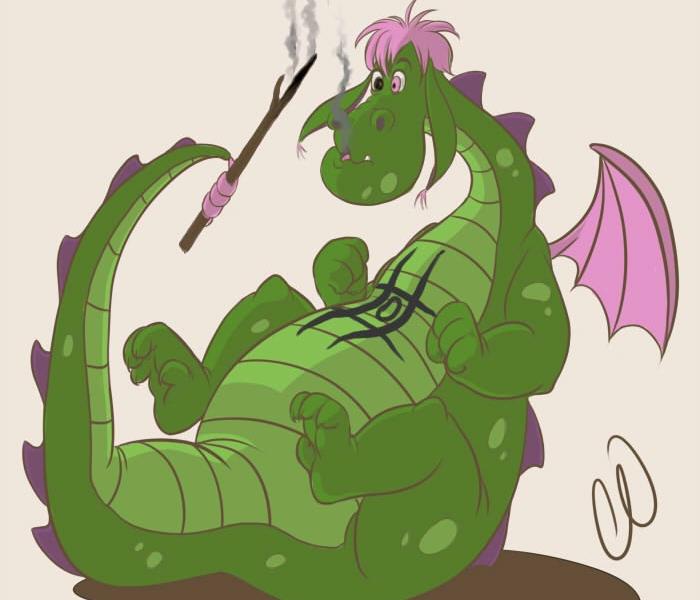 PUFF BACKS ~ More MESSY than an Untrained Dragon!
PUFF BACKS ~ More MESSY than an Untrained Dragon!
A PUFF BACK occurs when an oil burner doesn't immediately ignite! This causes the oil to build up before ignition. Similar to the backfiring of a car.
PUFF BACKS can propel soot through the furnace exhaust system and into your home!
If you have forced hot air, the soot will travel through your heating system and into your living space!
It's amazing how much area soot can cover! In some cases excess soot can force you out of your home!
PUFF BACK soot may appear to be just a black powder-like substance, but it is actually a mixture of oil! PUFF BACK soot is STICKY and VERY MESSY! ... PUFF BACK soot is also EXTREMELY DIFFICULT to remove!
If you think you have experienced a PUFF BACK in your home or business. contact SERVPRO of The Bridgewaters for a trained technician to arrive at your location, assess the damage and determine the best plan of action for CLEAN-UP! ... SERVPRO of The Bridgewaters ~ Faster to Any Size Disaster! ~ Available 24/7
TIPS to Help YOUR Family SURVIVE a FIRE!
4/6/2018 (Permalink)
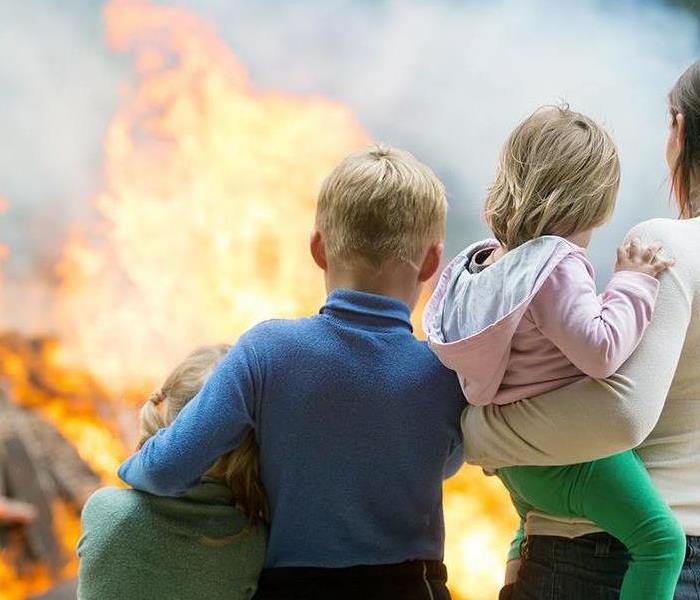 TIPS to Help YOUR Family SURVIVE a FIRE!
TIPS to Help YOUR Family SURVIVE a FIRE!
TIPS to HELP YOUR FAMILY SURVIVE a FIRE from The AMERICAN RED CROSS
* INSTALL SMOKE ALARMS on EVERY level of your home! Including inside bedrooms and outside sleeping areas. Once a month check whether each Smoke Alarm in the home is working properly by pushing the test button. Replace batteries in Smoke Alarms at least once a year. IMMEDIATELY install a new battery if a Smoke Alarm chirps; warning the battery is low!
* TEACH YOUR CHILDREN what Smoke Alarms sound like and what to do when they hear one.
* ENSURE that ALL household members know two ways to escape from every room of your home, and where to meet up outside.
* PRACTICE your Fire Escape Plan at least twice a year and at different times of the day! Practice waking up to smoke alarms, low crawling and meeting outside. Make sure everyone knows how to call 9-1-1.
* EMPHASIZE ~ “GET OUT, STAY OUT”! ~ Only professional firefighters should enter a building that is on fire; EVEN IF other family members, pets or prized possessions are inside!
* USE Quick-Release Devices on barred windows and doors. Security bars without Quick-Release devices can trap you in a deadly fire! If you have security bars on your windows, be sure one window in each sleeping room has a Quick-Release device!
* CONSIDER Escape Ladders for sleeping areas on the second or third floor. Learn how to use them, and store them near the windows!
* TEACH household members to STOP, DROP and ROLL if their clothes should catch on fire!
SERVPRO of The Bridgewaters ~ Faster to Any Size Disaster! ~ Available 24/7
Fire Safety from the American Red Cross
3/30/2018 (Permalink)
Help Your Child Survive a Fire
- Install smoke alarms on every level of your home, inside bedrooms and outside sleeping areas. Once a month check whether each alarm in the home is working properly by pushing the test button. Replace batteries in smoke alarms at least once a year. Immediately install a new battery if an alarm chirps, warning the battery is low.
- Teach your children what smoke alarms sound like and what to do when they hear one.
- Ensure that all household members know two ways to escape from every room of your home, and where to meet up outside.
- Practice your fire escape plan at least twice a year and at different times of the day. Practice waking up to smoke alarms, low crawling and meeting outside. Make sure everyone knows how to call 9-1-1.
- Emphasize “get out, stay out.” Only professional firefighters should enter a building that is on fire—even if other family members, pets or prized possessions are inside.
- Use quick-release devices on barred windows and doors. Security bars without release devices can trap you in a deadly fire. If you have security bars on your windows, be sure one window in each sleeping room has a release device.
- Consider getting escape ladders for sleeping areas on the second or third floor. Learn how to use them, and store them near the windows.
- Teach household members to STOP, DROP and ROLL if their clothes should catch on fire.
Fire Clean Up
3/1/2018 (Permalink)
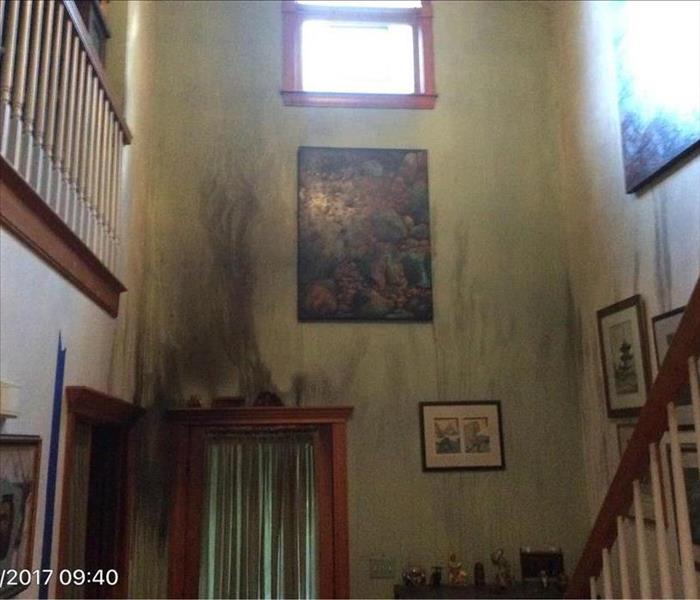 Smoke and Soot Damage Can Cause a Pervasive Odor in Your Home
Smoke and Soot Damage Can Cause a Pervasive Odor in Your Home
Smoke and soot is very invasive and can penetrate various cavities within your home, causing hidden damage and odor. Our smoke damage expertise and experience allows us to inspect and accurately assess the extent of the damage to develop a comprehensive plan of action.
Smoke and soot facts:
- Hot smoke migrates to cooler areas and upper levels of a structure.
- Smoke flows around plumbing systems, seeping through the holes used by pipes to go from floor to floor.
- The type of smoke may greatly affect the restoration process.
Different Types of Smoke
There are two different types of smoke–wet and dry. As a result, there are different types of soot residue after a fire. Before restoration begins, SERVPRO of The Bridgewaters will test the soot to determine which type of smoke damage occurred. The cleaning procedures will then be based on the information identified during pretesting. Here is some additional information:
Wet Smoke – Plastic and Rubber
- Low heat, smoldering, pungent odor, sticky, smeary. Smoke webs are more difficult to clean.
Dry Smoke – Paper and Wood
- Fast burning, high temperatures, heat rises therefore smoke rises.
Protein Fire Residue – Produced by evaporation of material rather than from a fire
- Virtually invisible, discolors paints and varnishes, extreme pungent odor.
Our Fire Damage Restoration Services
Since each smoke and fire damage situation is a little different, each one requires a unique solution tailored for the specific conditions. We have the equipment, expertise, and experience to restore your fire and smoke damage. We will also treat your family with empathy and respect and your property with care.
Have Questions about Fire, Smoke, or Soot Damage?
Call Us Today – 508-697-5439
Fire damage In Middleboro
3/1/2018 (Permalink)
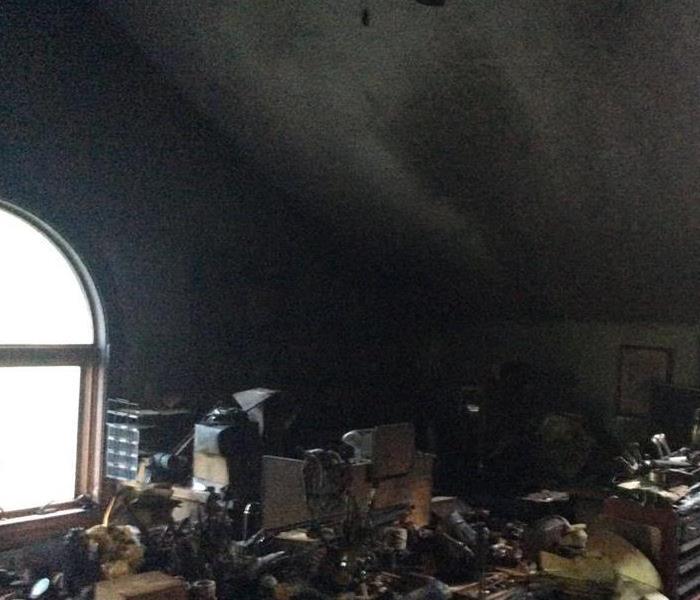 Devastating damage from an electrical fire
Devastating damage from an electrical fire
Fires can be especially devastating to your home or business. After the fire trucks leave, your property will likely suffer from not only fire and smoke damage, but also widespread water damage and flooding from firefighting efforts. SERVPRO Franchise Professionals have specialized fire and water damage restoration training and experience to quickly clean up and restore your home to pre-fire condition. They also can remove the pervasive smoke odor and deep-clean soot from upholstery and carpet.
Please remember to contact SERVPRO of The Bridgewaters if you are in need of fire clean up.
Puff Back - Norfolk, MA
4/20/2017 (Permalink)
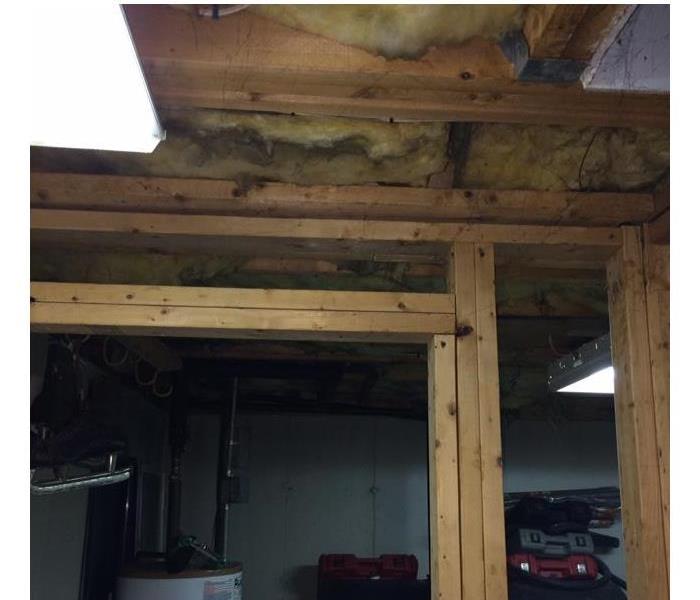 The homeowner thought his home was dirty, but soon found out that it was caused by a puff back.
The homeowner thought his home was dirty, but soon found out that it was caused by a puff back.
A puff back happens when an oil burner doesn't immediately ignite cause oil to build up before ignition. The resulting cause would be like that to the backfiring of a car. This explosion can shoot soot through the furnace exhaust system and into your home. If you have forced hot air the soot will travel through your heating system.
It's amazing how much area soot can cover, in some cases it can force you out of your home. Puff Back soot is not just a powder-like substance but a mixture of oil that is black and sticky, making it extremely difficult to remove.
If you think you have suffered a puff back from your in your home contact SERVPRO of The Bridgewaters at 508-697-5439. A trained technician can come, assess, and determine the best plan for clean-up.
Puff Back - Plymouth, MA
4/20/2017 (Permalink)
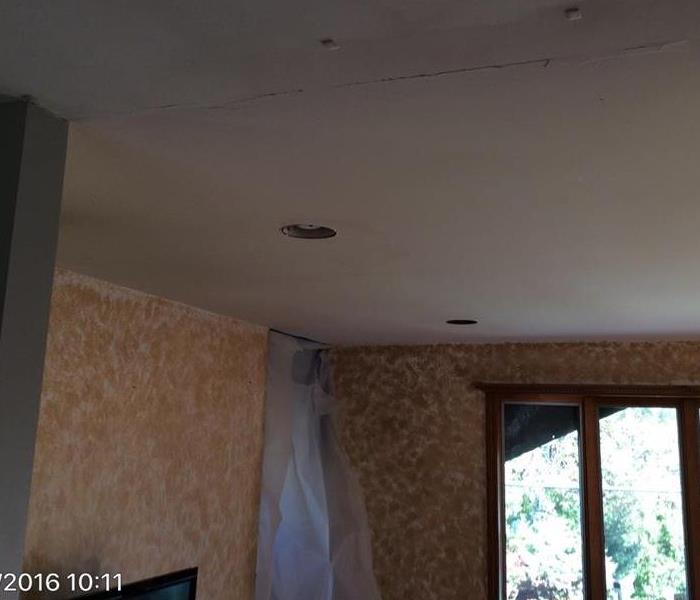 This homeowner suffered a massive puff back.
This homeowner suffered a massive puff back.
A furnace puff back is an explosion that occurs when your oil burner mis-fires casing soot to billow throughout your home. This soot travels through your exhaust system leaving a blacken oily sticky soot affecting walls, bedding, clothing, etc.
If you home has a controlled or forced air system puff backs send soot the same way it sends heated air.
Puff backs can occur one of two ways, either by a large and apparent puff back, or in smaller amounts that happen over time. If gone untreated, your family could suffer respiratory problems.
If you think that your home has fallen victim to a puff back call SERVPRO of the Bridgewaters at 508-697-5439 and a certified and trained technician will come and assess what plan of action needs to be taken.
Grease Fire -What to do.
2/21/2017 (Permalink)
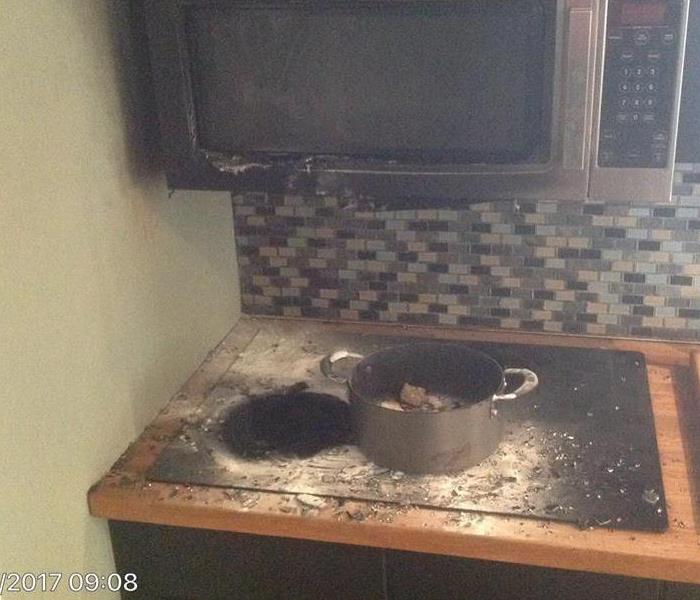 The effects of a grease fire in Plymouth, MA
The effects of a grease fire in Plymouth, MA
A fire needs 3 things to burn, Heat, Oxygen and Fuel. A fire will keep growing until one of hose is removed.
The safest way to put out a grease fire burning in a pan...
Remove the oxygen.
Here's how....
Put on Oven Mitts to protect your hands.
Get the lid that fits the pan and 'slide' it over the top of the burning pan.
Shut off the burner to stop adding heat.
Leave the pan alone, don't move it, and don't remove the lid until it has cooled completely.
Other ways to put out a grease fire....
Use a class B or ABC fire extinguisher.
A fire Extinguisher will release a-lot of pressure, so start at a distance away and move towards the fire rather than up-close spraying directly on to the burning grease which could tip the pan and spread the fire.
You could also ....
Carefully pour a good amount of baking soda onto the grease.
or...
Soak a towel under the faucet, wring out the excess dripping water, and drape over the burning grease pan to smother it.
Things NOT TO DO with a grease fire.
DO NOT move or carry the pan outside, it will fan the flames and risk spreading and/or catching your clothes on fire.
DO NOT douse the grease fire with water, or milk, etc..
It will cause an explosion like a fire ball.
DO NOT throw flour on to a grease fire because flour is combustible.
Microwave Fire- Brockton, MA
2/21/2017 (Permalink)
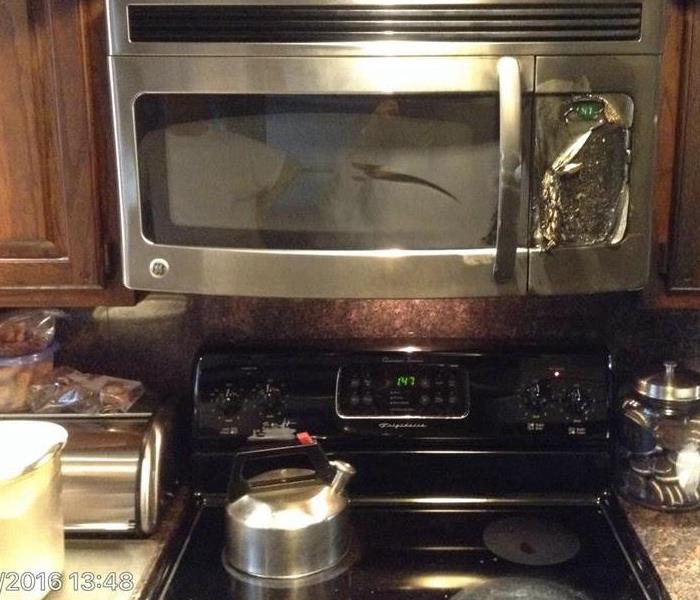 Microwave fire in Brockton caused soot and smoke damage in the home
Microwave fire in Brockton caused soot and smoke damage in the home
We've all had it happen: Maybe we left the microwave on for too long or forgot to take off the aluminum foil and suddenly, things are overflowing or sparks are flying. Fortunately, for every kitchen disaster there is a solution . And, while the food may not be salvageable, chances are you'll learn how to prevent it from happening in the future.
Disaster: Your microwave catches fire
Why it happened: There are a few reasons why there might be a small fire in your microwave. If you accidentally leave a metal utensil or piece of aluminum foil in the microwave, then that could cause sparks which could ignite. If the microwave is very dirty, then residual oil or pieces of food could be the culprit. Cooking something for too long, whether popcorn or chicken breast, could also cause a fire.
What to do when your Microwave catches fire.
If you notice a small fire in the microwave, immediately unplug it and leave the door closed to allow the fire to suffocate. If there is any risk that the fire may spread immediately call the fire department.
When you need the experts to come in and clean, contact SERVPRO of The Bridgewaters. Our technicians are all trained and certified when it comes to cleaning your home. We make it "Like it never even happened."
Call today at 508-697-5439
Puff Back - Raynham, MA
2/21/2017 (Permalink)
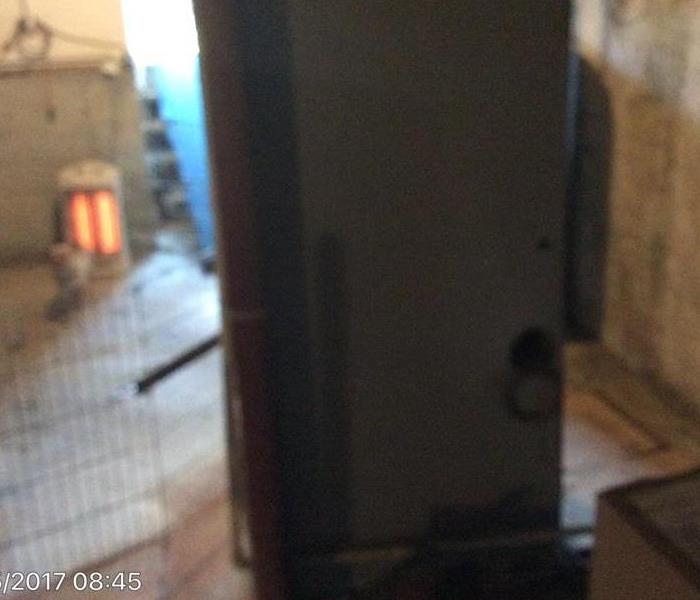 A furnace malfunction causing a puff back.
A furnace malfunction causing a puff back.
What is a puff back...
Puff-backs occurs when soot and oil blow back from the miss-firing of your furnace. It happens mostly to oil burning furnaces but can happen with other heaters as well. Often the combination of soot and petroleum-based oil can damage many of the items in your house. While the soot leaves dark stains, the oil embeds itself into porous materials. Clothe, carpet and other porous materials slowly adsorb the ash. If not treated quickly, the damage can become permanent.
SERVPRO of The Bridgewaters specializes in the clean up of your Puff-Back. Our technicians are certified and trained to handle even the toughest of Puff-Backs. SERVPRO of The Bridgewaters uses a special process to eliminate soot and smoke to make it "like it never even happened".
If you think you might have suffered a puff back call SERVPRO of The Bridgewaters at 508-697-5439 for their advise today.
Dryer Fire - Marshfield, MA
2/21/2017 (Permalink)
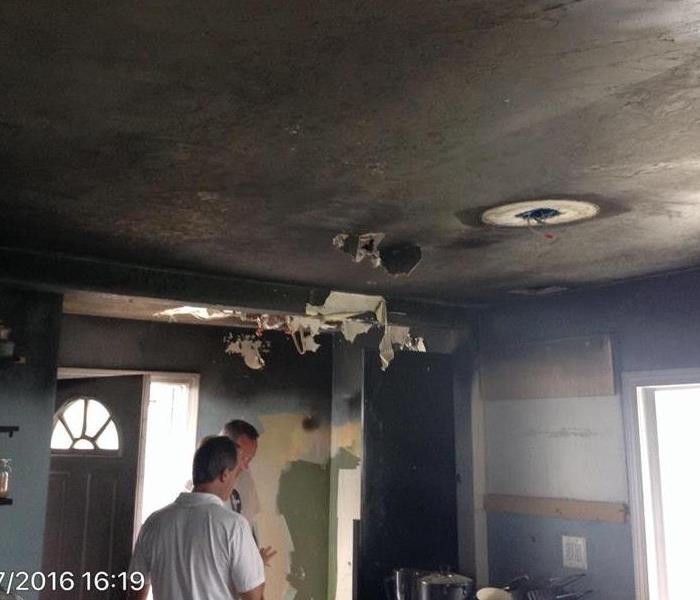 The is the effect of a dryer fire in your home.
The is the effect of a dryer fire in your home.
doing laundry is likely part of your daily (or at least) weekly routine. But did you know that dryer fires are responsible for a significant number of damages, injuries and deaths every year? There are approximately 15,600 structure fires, 400 injuries and 15 deaths reported annually as a result of dryer fires. According to the United States Fire Administration, every year clothes dryer fires account for over $100 million in loses. A majority of dryer fires occur as a result of highly flammable lint getting caught in the dryer's vent and becoming heated to the point of ignition.
Tips to prevent dryer fire.
- Dryers should be properly grounded.
- Check the outdoor vent flap to make sure it is not covered by snow
- keep the area around your dryer clear of things that can burn, boxes and cleaning supplies
- Never dry clothes that have come into contact with flammable substances. "I.E" gasoline, paint thinner etc.
Should you suffer a dryer fire contact SERVPRO of The Bridgewaters and let the experts do the cleaning for you. Our certified technicians will make it "like it never even happened". Call today at 508-697-5439.
Puff Backs - Tips
10/12/2016 (Permalink)
A puff back is the puff of smoke and soot from a malfunctioning heating unit inside your furnace that brings gunk into your home. When a furnace works properly, it combines fuel and oxygen in balanced amounts for good, controlled combustion. The correct mix produces a steady flame and burns the fuel almost completely. The puff back happens when the mix is unbalanced. For example, when the rate of combustion in your furnace slows, but the fuel injected into the heating system remains constant, a sudden combustion can occur.
For example when a car backfires, a puff back can cause a “boom” and a big vibration. This vibration shakes loose accumulated soot in the heating system and duct work. The air stream of forced air that normally brings heat into your home instead brings these soot particles. Think of how the heat moves into all the areas of your home. The soot from a puff back will take the same path.
Residue from a puff back is usually an oily, sticky film whose base is petroleum. It has a strong smell and makes a mess that permeates everything. Because the puff back is backed up by a little explosion, these soot particles get a boost getting into the combination of nooks and crannies, propulsion and a petroleum base makes the mess caused by a puff back so difficult to tackle. Often traditional cleaning methods make the mess even worse than when you started. In some cases they also use sealants to preventing re-contamination.In most cases, an immediate response by a trained professional is called for.
Helpful Tips:
-Most puff back cleanups are covered by insurance
-The cost to repair the furnace would most likely NOT be covered by insurance.
-Most oil companies can also inspect and service the boiler at your property, which greatly reduces the chances of a puff back.
Keeping a level head after the fire damage has been done
4/7/2016 (Permalink)
We’re always told that if disaster strikes, we are to remain calm, cool and collected, but when that time hits, it’s hard to always put those words to action. Although there is a lot of chaos in that moment, it is still very important to stay organized and calm from the beginning of the disaster to the end of the restoration. According to ldr4service.com, there are steps we can take to stay organized and calm during these tense times.
Steps to clearing the chaos –
- First, call your insurance agent to get the claim filed as soon as possible to get the insurance adjustor to your home.
- Next, call a local restoration team to assess the damage as soon as possible and get working on the damage so it does not get worse over time.
- Keep a binder and notepad with all of the information that you’re receiving from your insurance provider and restoration professionals. (During this hectic time, don’t rely on remembering everything just off the top of your head)
- Last, but not least, make sure to save all receipts and documentation you receive pertaining to the incident and only give copies when requested; keep the originals.
Now that we’ve gone through the steps to do, here are some steps NOT to do when involved in this situation.
- Make sure not to wire any soot damage from walls, ceilings or other absorbent surfaces.
- Do not keep or use carpet or furniture that has been heavily damaged by the residue as this is unhealthy.
- Dispose of any canned goods or food items that were exposed to the extreme heat.
- Do not turn on any electronic devices until they’re thoroughly inspected by a professional to make sure there isn’t electrical damage.
Hopefully no one will ever have to go through these events, but if it does occur, these steps will help you keep that calm and collected mindset to get through the unfortunate.
Keep your family and home safe from fire damage by maintaining your smoke alarms
4/7/2016 (Permalink)
According to the National Fire Protection Association, three out of five home fire deaths resulted from fires in properties that did not have working smoke alarms.
The death rate per 100 reported home fires was more than twice as high in homes that did not have any working smoke alarms. Most smoke alarm failures are due to missing, disconnected or dead batteries. According to the NFPA, there are precautions to take when it comes to maintaining and checking your smoke alarms.
Smoke alarm safety tips
· Install smoke alarms inside and outside of each bedroom or sleeping area. Every level of the home, including the basement should have smoke alarms installed.
· It is recommended to have interconnected smoke alarms so that when one smoke alarm goes off, they all go off at once.
· Test all smoke alarms at least once a month by hitting the test button on the smoke alarm.
· Smoke alarms should be installed on the ceiling or high up on a wall.
· Replace all smoke alarms at 10 years of use.
· People that are hard of hearing can order special smoke alarms that include flashing strobe lights and bed shakers to alert the person within the property.
· Make sure to talk with your children about the importance of smoke alarms and what to do in case of a fire.
· There are two kinds of alarms: ionization and photoelectric
- Ionization smoke alarms are quicker warn about flaming fires to
- Photoelectric smoke alarms are quicker to warn about smoldering fires
It is best to have both present in the home
Source - http://www.nfpa.org/safety-information/for-consumers/fire-and-safety-equipment/smoke-alarms/safety-messages-about-smoke-alarms
SERVPRO® of The Bridgewaters understands the importance of keeping your home happy and healthy. If you have any questions or concerns regarding mold in your home call 508-697-5439


 24/7 Emergency Service
24/7 Emergency Service






















